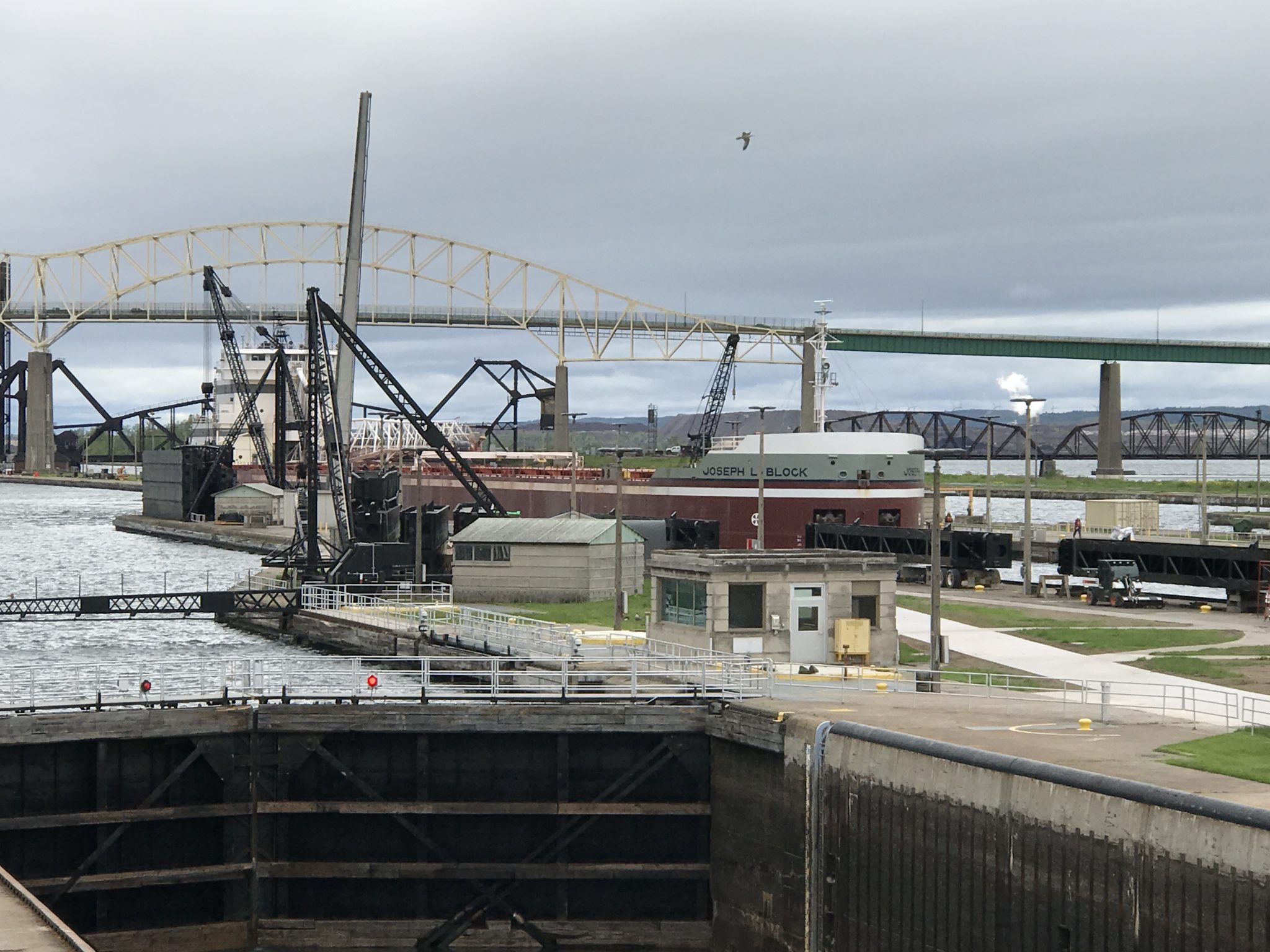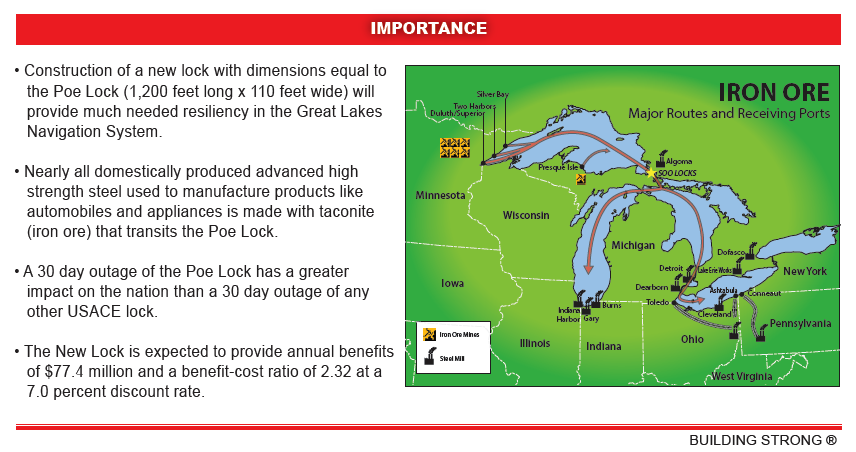Work Begins on New Soo Lock After Decades of Delays
Literally tons of freight, cargo and iron ore pass through the locks every year. The Army says the new lock will ensure it keeps flowing.

Work has finally started on a new shipping lock in Sault Ste. Marie, Michigan, more than 30 years after the project was first proposed.
The Soo Locks allow millions of dollars’ worth of freight, cargo and iron ore to travel from Lake Superior to the rest of the Great Lakes. Only one lock is big enough to hold the largest vessels, some of which are 1,000 feet long. If the lock breaks down, it could damage the region’s economy.
“There’s a tremendous amount of economic impact, especially when you consider all of the iron ore that we ship down to all the steel mills.” — Lt. Col. Scott Katalenich on the importance of the Soo Locks.
The locks are under the jurisdiction of the U.S. Army Corps of Engineers, so Congress controls their funding. Plans for a new lock were proposed in 1986 but was never a major budget priority. President Trump campaigned for the project during several visits to Michigan. In 2018, lawmakers finally approved significant funding to begin construction.

“We received about $32 million from the fiscal 2019 work plan,” says Lt. Col. Scott Katalenich, commander of the Army Corps of Engineers Detroit district. “The federal government has demonstrated that they are committed to this critical piece of infrastructure and making this project a reality.”
Click on the audio player to hear Lt. Col. Katalenich talk about the timeline for a new Soo lock.
Contractors began deepening the upstream channel in May, but have stopped work for the winter. Lt. Col. Katalenich says they will resume in the spring. Phase two involves stabilizing approach walls, where ships tie up and wait for their turn to pass through the locks. That will also start in the spring. The final phase is building the new lock chamber itself, which is scheduled to begin in 2022.
The new lock will replace two smaller passageways that are rarely used. It will have the same dimensions as the Poe Lock, named for Army Gen. Orlando Poe, the engineer who designed the original Soo lock built in 1896.
Lt. Col. Katalenich says having two locks large enough to handle the 1,000-footers will ensure that ship traffic will continue to flow if the Poe Lock breaks down.
“There’s a tremendous amount of economic impacts when you consider all the iron ore that comes from the mines up in northern Minnesota, and we ship that down to all the steel mills,” he says. “The Soo Locks are a critical piece of that infrastructure so we can transport all that material across the Great Lakes.”
Katalenich says the coronavirus pandemic has not interfered with construction, but it has closed the Visitors Center in Sault Ste. Marie. It has two large platforms overlooking the locks, allowing people to stand and watch ships being raised or lowered, depending on which direction they’re going.
“We hope to be able to do that this next summer if the conditions are right,” he says.
Trusted, accurate, up-to-date
WDET is here to keep you informed on essential information, news and resources related to COVID-19.
This is a stressful, insecure time for many. So it’s more important than ever for you, our listeners and readers, who are able to donate to keep supporting WDET’s mission. Please make a gift today.
